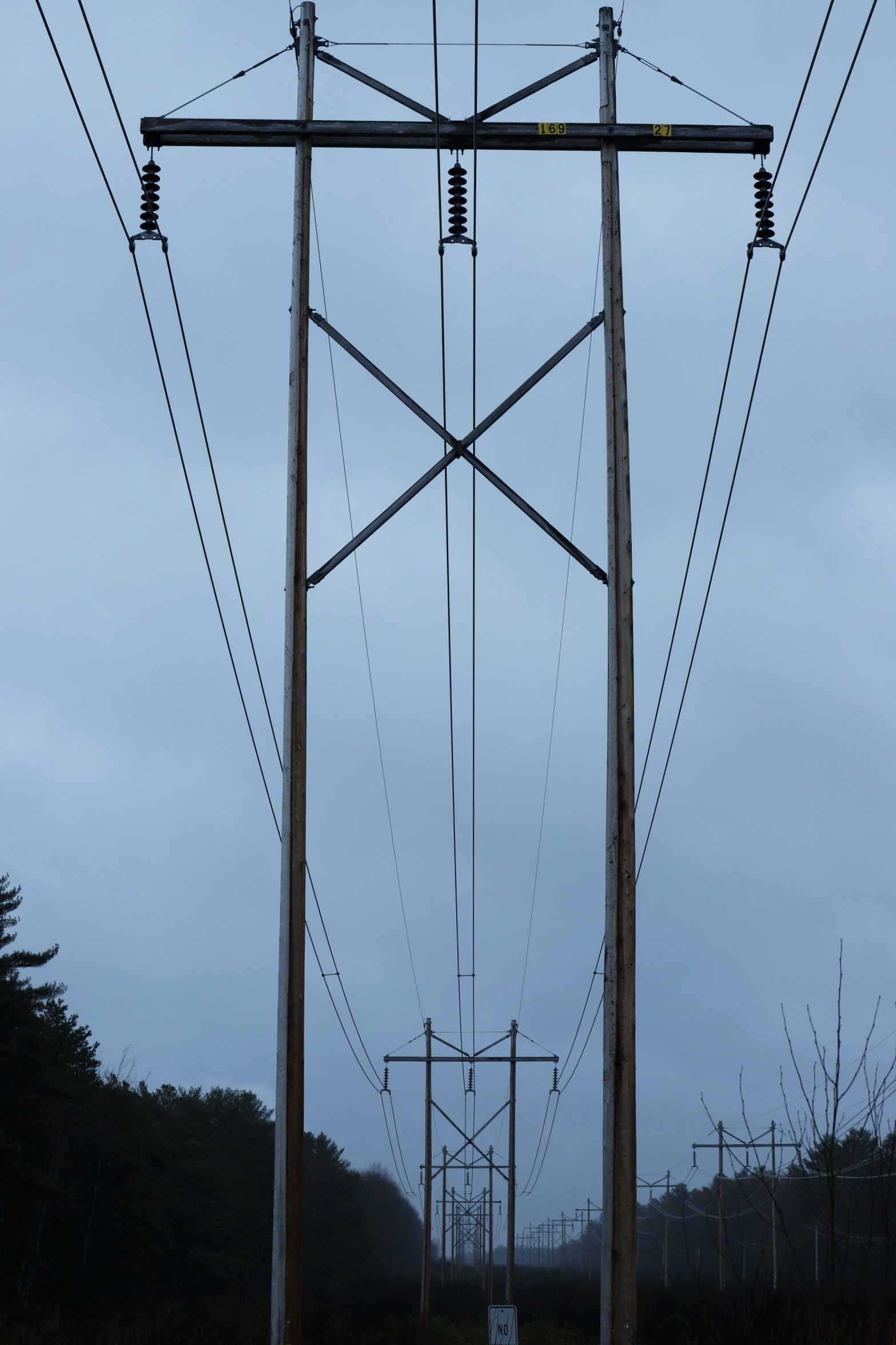By Marshall Woods, Staff Writer
Public debate about a proposed 147-mile power line through Maine to bring hydropower to Massachusetts has been steady since September 2017. The project is a partnership between Central Maine Power (CMP) and Canadian power company Hydro-Québec Energy Services. The formal name of the project is the New England Clean Energy Connect (NECEC).
USM Environmental Science students Mary Hawko and Rob MacKusick have spent the spring semester studying the impacts of the section of the line that would be buried beneath the Kennebec River Gorge. According to Hawko, creating a conduit under the river “requires bringing in heavy equipment, trenching, downing trees, clearing of the site, set up of a drill pad, waste pit, and etc.”
Continued construction on the transmission line requires access roads “to be maintained in the same manner of the transmission corridor to facilitate ongoing operations,” Hawko said. “There is concern regarding the actual drilling operation Horizontal Directional Drilling and the setup and recovery of equipment in the area.”
According to Hawko, the short term disturbance from construction could lead to longer term problems, “such as permanent loss of hardwoods and conifers.” She said that an alternative to the greenfield route can and should be found.
Many towns are concerned because the 1,200 megawatt line won’t provide power directly to Maine. Construction would require a corridor for the line of 150 feet minimum. CMP will widen some areas for the new line while utilizing 92 miles of existing infrastructure. The other 53 miles running from Beattie Township on Maine’s western border to The Forks is undeveloped forest.
According to the Natural Resources Council of Maine (NRCM), the line would also cross the Appalachian Trail, over 200 wetlands, 100 streams and habitats for specific birds.
Massachusetts’s 2008 Climate Protection and Green Economy Act requires the state act to reduce its greenhouse gas emissions incrementally towards goals set every ten years from 2020 to 2050. The NECEC project is the result of a Massachusetts solicitation of plans to help reach these goals; CMP and Hydro-Québec are responding to a state government bid.
Some people question the actual emissions reductions and energy sources. A study commissioned by the NRCM, Maine Renewable Energy Association and the Sierra Club asserts that there is no guarantee the energy will come from clean sources. The study, prepared by Energyzt advising, states CMP admitted during a Public Utilities Commission technical conference that agreements expect Hydro-Québec to use its “existing resources” to “optimize profits.” Quebec’s government reported an “existing resource” in an energy sector report back in 2004 “According to the report, “Hydro-Québec is able to purchase electrical energy from neighbouring markets at lower prices during certain periods, and then resell it later to neighbouring networks at higher prices.” Energy going into the New England power grid won’t necessarily come from hydropower, or renewable sources, which could be contributing to demand for fossil fuels.
The NECEC still requires more permits, but the transmission line is getting closer to being created. On April 11th, the Maine Public Utilities Commission voted to approve the proposal, but requires the same approval from other organizations like the Maine Department of Environmental Protection. CMP claims the project will save Maine consumers money on electricity rates and provide New England with clean energy.
Mary Hawko and Rob MacKusick’s capstone presentation on their research about the crossing will be in Bailey 111 between 9:30 and 10:45 on April 30.

